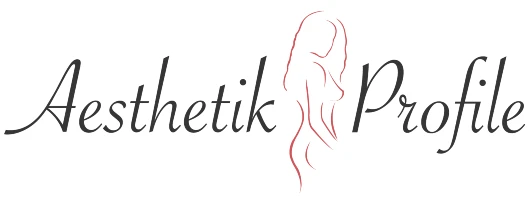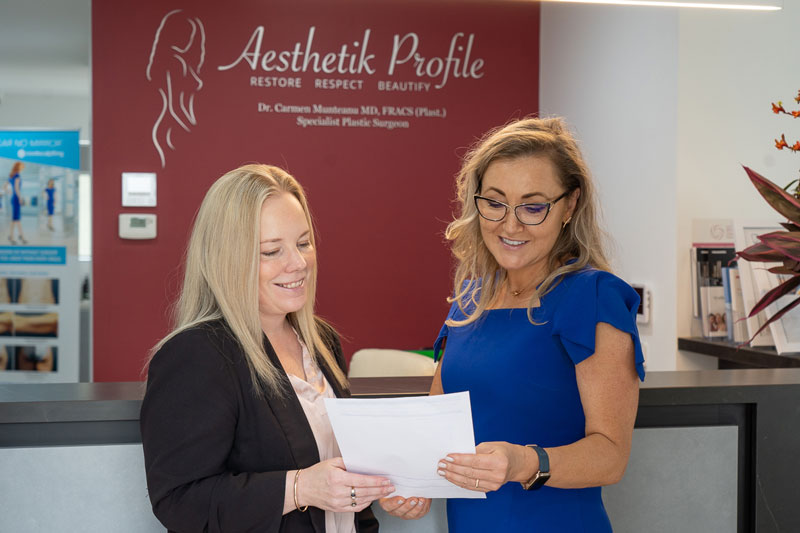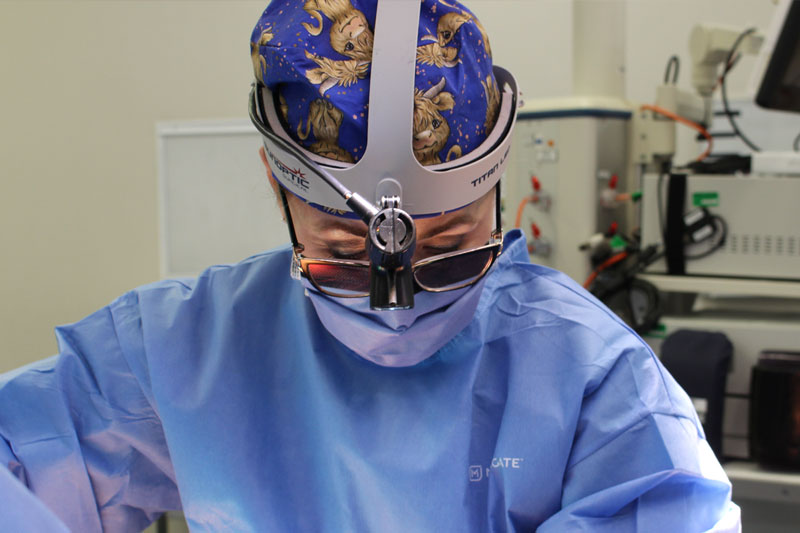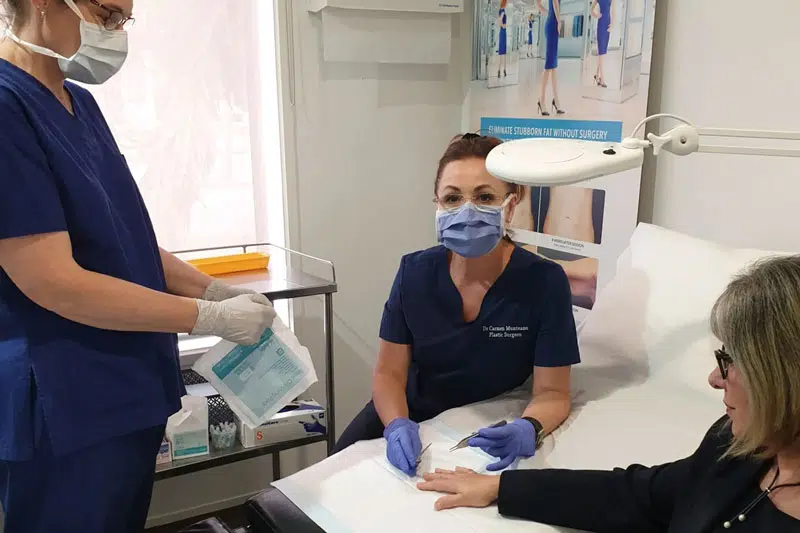Breast Implant Sizes and Bra Cup Sizes
If you are interested in learning more about breast augmentation, you’re probably wondering how new implants will translate into bra sizes. It’s a question that is often asked, however it doesn’t have a straightforward answer. Knowing how breast implant sizes relate to bra cup sizes is more than just a matter of curiosity. It’s about comfort, appearance, and even health. A poorly fitted bra or implant can lead to back, shoulder and neck pain, as well as, skin irritation, and other issues.
Female plastic surgeon Dr Carmen Munteanu MD. FRACS (Plas) is a skilled and compassionate specialist plastic surgeon. She has years of experience and training and offers aesthetic breast surgery and body contouring, including Breast Reduction, Breast Lift, Breast Implant Surgery and Body Surgery.
What Are Bra Cup Sizes?
Bra sizes are usually expressed as numbers and letters, for example 12C. The number represents the band size (the measurement around your ribcage, right under your breasts), and the letter represents the cup size. However, unfortunately cup sizes are not standardised and can vary between brands and styles.
What Are Breast Implant Sizes?
Breast implants are usually measured in cubic centimetres (cc), which is a unit of volume. They can range from as small as 100 cc to as large as 1000 cc or more. But what does this mean in terms of bra sizes?
| Cubic Centimetres (cc) | Approximate Bra Cup Size | Notes |
| 100 – 200 cc | A | Varies based on existing breast tissue |
| 200 – 300 cc | B | Varies based on existing breast tissue |
| 300 – 400 cc | C | Varies based on existing breast tissue |
| 400 – 500 cc | D | Varies based on existing breast tissue |
| 500 – 600 cc | DD or E | Varies based on existing breast tissue |
| 600 – 700 cc | DDD or F | Varies based on existing breast tissue |
| 700 – 800 cc | G | Varies based on existing breast tissue |
| 800 – 900 cc | H | Varies based on existing breast tissue |
| 900 – 1000 cc | I | Varies based on existing breast tissue |
| 1000 cc and above | J and above | Varies based on existing breast tissue |
Note: The above table is a very rough approximation and should not be used as a definitive guide. The actual bra size you’ll wear post-surgery depends on various factors, including your existing breast tissue, the shape and projection of the implant, and the brand and style of the bra.
What Size of Implant Will Give Me the Desired Result?
Each size range offers different results, from a modest increase in cup size to a significant increase:
| Implant Size (cc) | Likely Result on Cup Size | Best Suited For | Considerations |
| 100 – 200 cc | Increase by 1/2 to 1 cup | Those seeking a subtle size increase | Less noticeable change, may be suitable for those with smaller frames or those who want a subtle size increase |
| 200 – 350 cc | Increase by 1 to 1.5 cups | Moderate size increase | Noticeable but not overly significant change, often chosen for a balanced look |
| 350 – 500 cc | Increase by 1.5 to 2 cups | Significant size increase | More significant alteration, may be suitable for those seeking larger volume increases or more noticeable results. |
| 500 – 800 cc | Increase by 2 to 3 cups | Very significant size increase | Very noticeable change, often chosen by those seeking a large volume and projection increase. |
| 800 cc and above | Increase by 3 cups or more | Very significant size increase | Not commonly recommended due to potential health risks and poor aesthetic results. |
The Difference between Volume and Dimensions
When it comes to selecting the right breast implants, understanding the difference between volume and dimensions is key. These two factors play a significant role in how your breasts will look and feel, both in and out of clothing.
Volume (cc)
- Definition: Volume is the space occupied by an object, in this case, the breast implant. It’s measured in cubic centimetres (cc).
- Range: Implant volume can range from as low as 100 cc to as high as 1000 cc or more.
- Impact on Appearance: A higher volume generally means a larger size, but how that size appears can be influenced by other factors like your existing breast tissue and body frame.
- Comfort and Lifestyle: The volume you choose should align with your daily activities. For instance, if you’re very active, a smaller volume might be more suitable.
- Compatibility with Existing Tissue: Your existing breast tissue will work with the implant to reach your new breast size. So, the volume you choose should be compatible with what you already have.
Dimensions (Width and Height)
- Definition: Dimensions refer to the width and height of the implant. Unlike volume, dimensions are measured in inches or centimetres but are not cubic.
- Width: The width of the implant can affect how the breasts will sit on your chest wall. A wider implant may offer more cleavage but could also make your breasts appear further apart.
- Height: The height of the implant can affect the projection of your breasts, meaning how far they extend from your chest wall.
- Shape: Dimensions are especially important when considering the shape of the implant. For example, round implants and teardrop-shaped implants will have different dimensions but could have the same volume.
Dr Carmen Will Help You Choose the Right Breast Implant Size for You
When you’re considering breast augmentation, one of the most important decisions you’ll make is choosing your implant size. Dr Carmen uses different methods to help you make this choice, taking into account several factors to make sure the implants will not only suit your body type but also meet your expectations. Here are the factors that will be considered:
Existing Breast Tissue
- Volume: Dr Carmen will assess the volume of your breast tissue. This is important because the implant will sit either behind or within your existing tissue, affecting the final size and appearance.
- Quality: The firmness and elasticity of your existing breast tissue can also play a role. Softer tissue may not offer as much support for the implant, which could influence the size or type of implant recommended.
- Shape: The shape of your breasts can affect how different sizes and styles of implants look on you.
Body Frame
- Height and Weight: Your overall body size, including your height and weight, will be considered. Larger frames may require larger implants for a balanced look, while smaller frames might find smaller implants to be more suitable.
- Chest Wall: The width and shape of your chest wall can affect how the implants will sit. A wider chest might require implants with a larger diameter.
- Shoulder Width: Broader shoulders may balance out larger implants, while narrower shoulders might make large implants appear disproportionate.
Download Dr Carmen’s Guide to Breast Augmentation with Implants
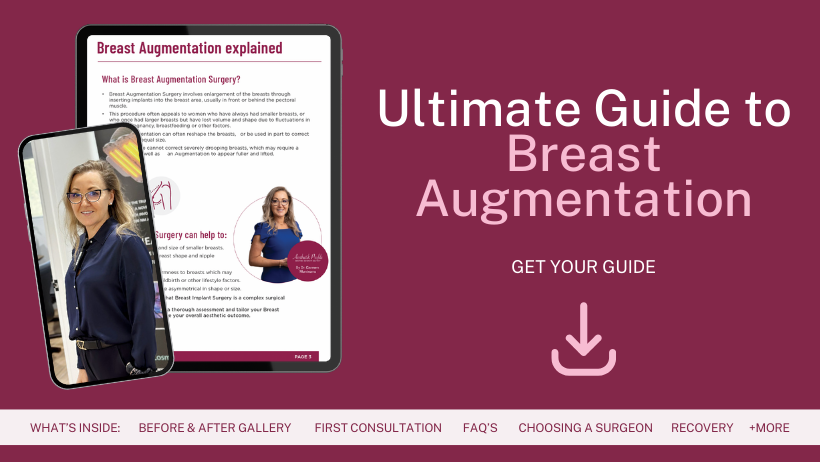
How to Choose the Right Bra for Your Implants
After undergoing breast augmentation, finding the right bra becomes the next important step. The right bra not only provides comfort and support but also helps make sure your implants look as good as possible under clothing. Here are some factors to consider when selecting the right bra for you and your implants.
Wait for the Green Light from Your Surgeon
- Healing Time: After surgery, you’ll need to wait for your surgeon’s approval before you start wearing regular bras again. This is to make sure your implants have settled and you’ve healed sufficiently. You do not want to be wearing an underwire bra before you are healed as it can affect your incisions and cause irritation.
- Post-Surgical Bras: Until then, you’ll likely be advised to wear a special post-surgical bra that provides extra support and reduces movement.
Consider the Material
- Fabric: The material of the bra can affect comfort and appearance. Soft, breathable fabrics like cotton are often recommended initially.
- Underwire or Not: Some people find underwire uncomfortable after getting implants. You might want to start with wireless options and then transition to underwire if it feels comfortable.
Pay Attention to Fit
- Band Size: The band should fit snugly around your chest. A band that’s too loose won’t provide enough support, while one that’s too tight can cause discomfort.
- Cup Size: Make sure the cups fully contain your breasts without spillage. There shouldn’t be any gaps between the bra and your breasts, as this can cause chafing.
- Strap Adjustment: Adjustable straps are a must. They allow you to customise the fit according to your body’s specific needs.
Style Matters
- Full-Coverage vs. Demi-Cup: Full-coverage bras offer more support and are generally more suitable for larger implants. Demi-cup bras or balconette styles may be more suitable for smaller implants or if you’re going for a certain look.
- Seams or Seamless: Bras with seams often provide more support but can show through thin or tight clothing. Seamless bras offer a smoother look but might not provide as much support for larger implants.
Try Before You Buy
- In-Store Fitting: If possible, get professionally fitted. Bra sizes can vary between brands, and a professional can help you find the most comfortable, supportive and suitable fit.
- Multiple Styles: Be open to trying on different styles and designs to see what works for you now. What looked good before your implants may not be the right choice after.
FAQs about Breast Implant Sizes

How are breast implant sizes measured?
- Breast implant sizes are typically measured in cubic centimetres (cc), which is a unit of volume.
- The sizes can range from as small as 100 cc to as large as 800 cc or even more, depending on the manufacturer and the type of implant.
Do larger implants always mean a larger cup size?
- Not necessarily. While larger implants will generally result in a larger cup size, other factors like existing breast tissue, body frame, and implant projection can also influence the final cup size.
- Always consult with a qualified surgeon for personalised advice.
Can I determine my new bra size before getting implants?
- While some surgeons offer 3D imaging or sizers to help you visualise potential results, predicting the exact bra size you’ll wear post-surgery can be challenging. Factors like swelling and how the implants settle can affect your final bra size.
What’s the difference between implant volume and dimensions?
- Implant volume refers to the space the implant occupies and is measured in cubic centimetres (cc).
- Dimensions include the width and height of the implant and can affect how the implant sits on your chest wall and fills the bra cup.
- Both are important considerations when choosing implants.
How does projection affect the appearance of my implants?
- Projection refers to how far the implant extends outward from the chest wall.
- Different levels of projection can make your breasts appear larger or smaller, even if the implant volume is the same.
- Your choice of projection can also influence the type of bras that will fit you.
Further Reading about Breast Procedures with Dr Carmen
- Read Dr Carmen’s Breast Augmentation Surgery Page
- Read Dr Carmen’s What is Breast Implant Replacement?
- Read Dr Carmen’s Breast implant Types for Breast Surgery
- Read Dr Carmen’s Blog about Breast Lift FAQs – Questions About Breast Lift Surgery
- Read Dr Carmen’s Blog about History of Breast Implants and Origins of Breast Enlargement Surgery
- Read Dr Carmen’s Blog about Breast Implant Placement
- Read Dr Carmen’s Blog about How Big Is a C Cup? – Useful Advice for Breast Implant Surgery
- Read Dr Carmen’s Blog about How Long Do Breast Implants Last?
Medical References about Breast Implant Sizes
- Choosing Breast Implant Size: A Matter of Aesthetics – Oxford Academic
- How Big Is Too Big? – PubMed
- Importance Of Size and Proportion In Breast Augmentation – American Society of Plastic Surgeons
- Breast Prostheses: Types, Cost, And How to Choose – NHS
